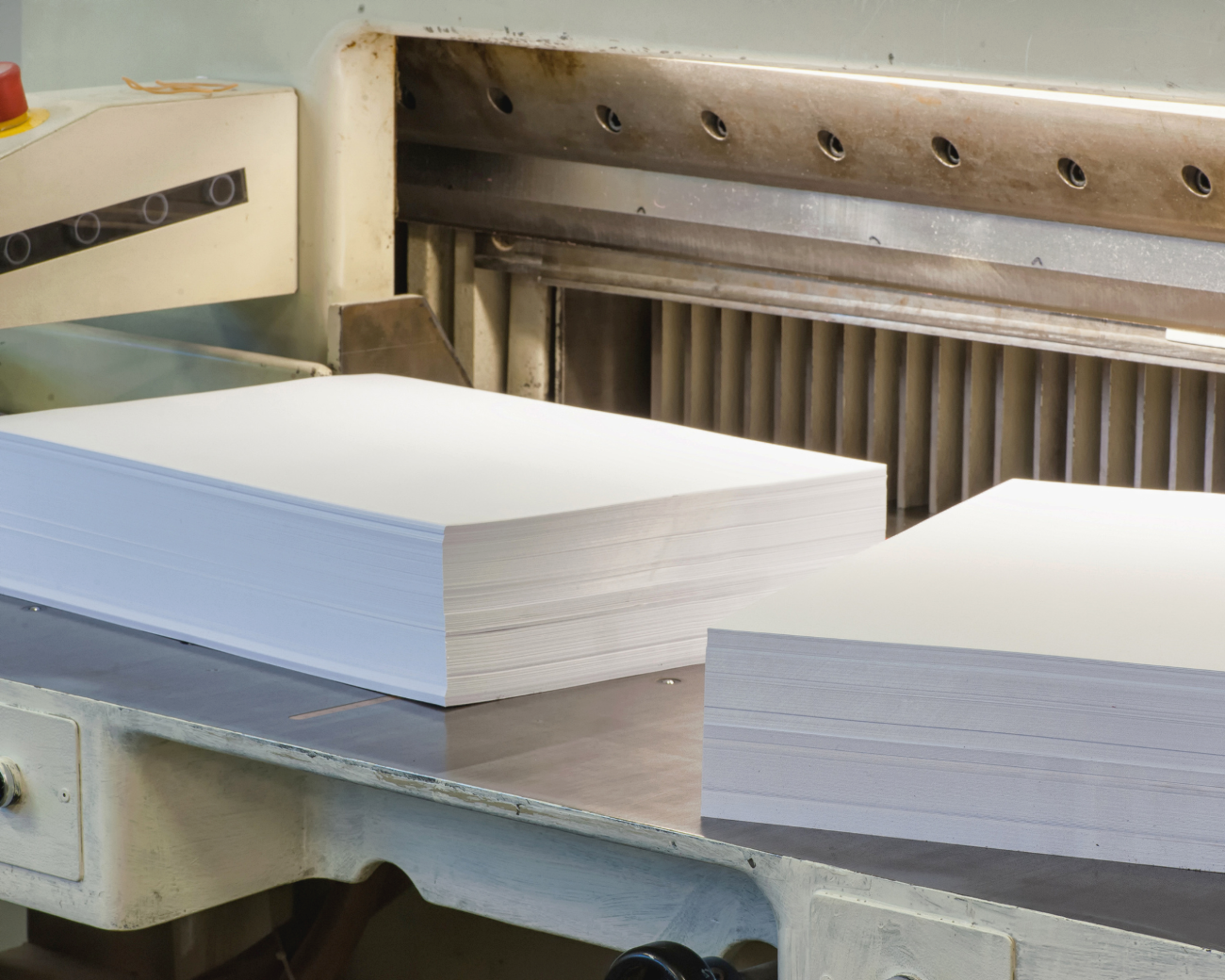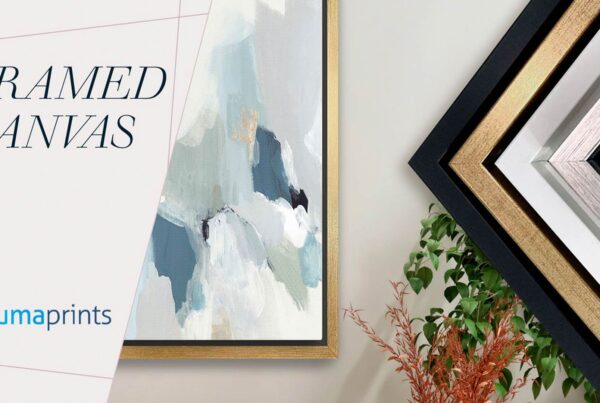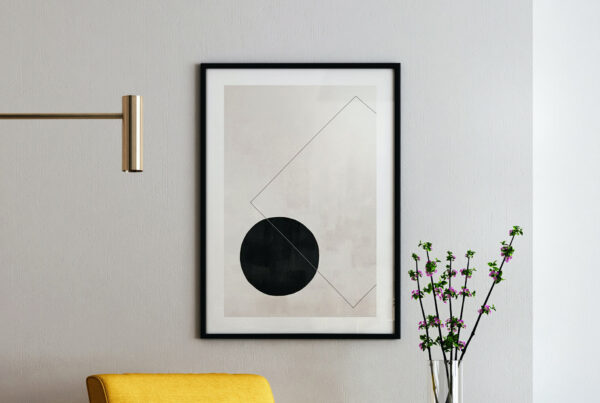If you’re creating art prints and selling them on Etsy or at local craft fairs, the paper you use can mean the difference between making decent sales and not even breaking even.
Different paper types can change not only the look of your prints but also the way they feel. You’ll want a paper that matches your style and showcases your work to its greatest potential.
There are different options available to guide you in choosing the paper that works best for your piece. There are many types of paper but we’ll round up the roster from our own fine art paper products: cold press paper, hot press paper, archival matte paper, and semi-gloss paper.
Before diving in, let’s discuss the different characteristics you should consider before using any fine art paper for your own endeavor.
1. WEIGHT
- Thickness of the paper is often expressed in pounds (lbs) or as grams per square meter (gsm)
- Different paper types have their own weight scale (ex. Inkjet photo papers are found in the 90 to 270 gsm range)
- Thicker or heavier papers have their advantages over flimsier ones; they usually offer crisper text and less ink bleed, thus are more often preferred by artists
2. TEXTURE
- This ranges from smooth to rough or heavily-textured
- Printing on smooth paper gives off a more detailed and well-defined image whereas textured paper conveys more depth and contrast to the picture
3. BRIGHTNESS / COLOR
- This refers to the percentage of light that the paper reflects
- Typically expressed on a scale of 1 to 100 (with 100 being the brightest)
- The whiter the paper, the better the prints look because of the amount of contrast and vibrancy
- There are several types of “white” – bright white being the brightest, followed by true white then warm white
4. FINISH
- Characteristic of the paper surface: glossy, satin, matte
- Paper finish affects ink absorption and the feel of the print:
– gloss is the best in terms of richness, clarity, and sheen
– matte finish gives a richness of color, overall softness, and is non-reflective
– satin reflects more light than matte ones but is not as shiny and reflective as the glossy ones
5. ACIDITY
- Acidic paper will turn yellow and brittle and break down quickly
- Acid-free paper has longer life without becoming yellow or breaking down, this makes it ideal for long-term storage
- With a ph scale of 0–14, anything with a pH value of 0–7 is considered acidic and 7–14 is nonacidic
- UV light, heat, and other factors contribute to the degradation of paper, especially the acidic ones, hence proper storage is vital in keeping your prints pristine
Want to learn more about how to sell you art prints? Read here.
Now that we’ve discussed the factors that differentiate one paper from another, here’s the list of different paper types to choose from.
COLD-PRESS PAPER
Cold-pressed paper is created by pressing cellulose pulp sheets through metal rollers covered with felt at a cold temperature. The term “cold press” refers to this process. It has a rough texture due to the use of felt rollers and drying procedures.
It’s popular because it’s easy to use. It’s available in a wide range of pad and sheet sizes and boasts a matte but slightly rough finish.
The primary characteristic of cold press paper is that it is produced without the use of high heat or chemical treatments; thus, preserving its natural texture and preventing it from warping over time as hot press paper does. The low amount of chemicals on its surface makes it more durable than other paper surfaces.
Cold-press papers are of great value to artists because they provide a less expensive option that still yields the highest quality when creating artwork.
Compared to hot-press paper, cold-press paper is more absorbent. Because of this, you have a little bit less time to move the paint on the canvas before the pigments bind to the paper. This makes it ideal for delicate works like watercolor paintings.
When using cold-pressed paper, colors tend to be less vibrant or vivid. This is most likely caused by the way that light is reflected by the surface of the paper. Cold-pressed paper’s rough surface is indented, providing softer and more diffused hues as a result of light reflections being scattered by the surface.
When wet, this kind of paper retains its dimensions well. The final artwork has a more pleasing aesthetic quality due to the paper’s texture. The paper’s texture is revealed as paint pigments settle and dry more in the paper’s grooves than on its ridges, enhancing the appearance of the finished piece of art. Because of its matte finish, cold press paper is ideal for fine art and other projects where you need to preserve color accuracy without adding gloss.
Weight: 340 gsm
Texture: heavily textured
Brightness/Color: bright white
Finish: matte
Acidity: acid-free
Ideal for watercolor.
HOT PRESS PAPER
Hot-press paper is made using a traditional manufacturing process. The sheets are pressed at high pressure between smooth, heated rollers resulting in the smooth surface texture of the paper. Hot-pressed paper is best suited for printmaking, etching, drafting, and sketching in fine detail.
Due to certain chemical treatments, hot-press papers are more expensive than regular papers. These chemicals make hot-press papers archival and acid-free but still less acidic than most surfaces. However, the extra expense is worth it because these papers will maintain your artwork’s iconic look for many years to come.
Hot-press paper is similar in composition to cold-press paper but has been subjected to more heat and pressure during the cooking process to generate a silky-smooth finish. It’s ideal for any medium, like acrylic, gouache, ink, tempera, pencils, charcoal and many others.
The paper is strong enough to support the fine detail work needed for this kind of artwork, such as shading and various textures in petals or leaves. These stunning works can also be created with cold press papers, albeit they may not have as much depth and contrast on the finer details.
Hot press paper is less absorbent because the fibers are denser. Compared to cold-pressed paper, this kind usually does not hold the pigment as tightly.
Since light is directly reflected off the paper’s flat, white surface, producing brighter colors, hot press paper has more vivid pigment hues.
Weight: 330 gsm
Texture: ultra-smooth
Brightness/Color: bright white
Finish: matte
Acidity: acid-free
Ideal for vivid, fine detail art.
ARCHIVAL MATTE PAPER
There’s a good reason why archival quality is often called museum quality or archival standard. To put it simply, archival grade paper, primarily when used for fine art, is better in terms of quality and stability than other paper kinds.
Several different materials can be used to make archival paper, including cotton, rice, grasses, elephant poop, wood pulp, and cotton. Typically, these substances are mechanically or chemically broken down into a cellulose fiber base. Due to the different materials used to produce it, artists can choose from a wide selection of archival paper.
Archival paper is a permanent, robust, and acid-free paper designed to survive a very long period. Conservation grade and archival grade are the two standard classifications.
Conservation grade, which is frequently created from buffered wood-based pulp, should not be kept for an extended period since the alkaline reserve may be depleted, causing it to degrade.
The archival grade is a cotton rag paper made of cotton pulp. Additionally, it is sometimes referred to as museum grade or museum quality. It’s the most stable option for long-term storage and preservation.
Unfortunately, there is no hard-and-fast rule about how long archival prints will persist. Factors such as the type of paper used, the inks used, and how the prints are displayed and stored all affect longevity.
Here are a few of the main elements from the set requirements from the international standards ISO 11108 that make paper eligible to be considered archival quality; The paper is free of lignin, unbleached cotton, acid (or neutral pH over 7), and optical brightening chemicals (OBAs).
Weight: 230 gsm
Texture: smooth
Brightness/Color: neutral white
Finish: matte
Acidity: acid-free
Ideal for quality photography and fine art.
SEMI-GLOSS PAPER
Semi-gloss paper commonly referred to as satin finish paper, offers a wide color spectrum, high resolution, and the full-color capacity of gloss paper. The minimal glare and light reflection off semi-gloss paper make it simpler to view images printed on it. The image is less impacted by harsh lighting and can be seen clearly from a broader angle. Semi-gloss paper is more appropriate for use for exhibiting images behind glass than gloss paper.
Semi-gloss papers have a wider range of glossiness, and this is frequently referred to with specific terms, such as pearl, a glossier satin, or luster, which has a significantly reduced satin level and is closer to matte.
Weight: 250 gsm
Texture: textured
Brightness/Color: Bright White
Finish: satin
Acidity: acid-free
Ideal for images that will be exhibited behind glass.
Here’s a summary of the characteristics of different paper types.
|
Paper Type |
Cold-press | Hot-press | Archival Matte |
Semi-gloss |
|
Weight (gsm) |
340 | 330 | 230 |
250 |
|
Finish |
Matte | Matte | Matte |
Satin |
|
Texture |
heavily textured | ultra-smooth | smooth |
textured |
|
Brightness |
Bright white | Bright white | Neutral White |
Bright white |
|
Acidity |
acid-free | acid-free | acid-free |
acid-free |
|
Ideal for |
Watercolor | Fine art | Photography and fine art |
Image exhibit behind glass |
Learn more about fine art paper prints here, or send us a message to request for a sample pack.






You really make it appear really easy with your presentation but
I in finding this matter to be really one thing which I feel I’d never understand.
It sort of feels too complicated and very vast for me. I am
having a look ahead to your next submit, I will try to get the hang of it!
This is the most comprehensive and most clearly explained description of different papers and their uses I have seen while investigating many suppliers. I will still be ordering short runs of multiple artworks in order to see my prints on the various papers, but you have helped me narrow my choices considerably. Thank you!